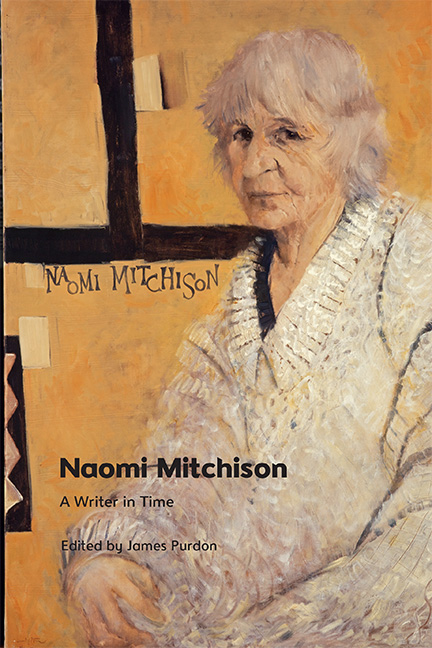Book contents
- Frontmatter
- Contents
- Acknowledgements
- Notes on Contributors
- Introduction
- 1 Naomi Mitchison’s Interwar Short Stories
- 2 ‘She had her hand on the plow’: Shame, Uncertainty and Transformation in The Corn King and the Spring Queen
- 3 Varieties of Sexual Experience: Naomi Mitchison, Mysticism and Gerald Heard
- 4 Scientific Temporalities in We Have Been Warned and ‘Beyond This Limit’
- 5 Send in the Clones? Naomi Mitchison and the Politics of Reproduction and Motherhood
- 6 From Argyll with Love: Naomi Mitchison and the Soviet Union
- 7 Fire or Blood? Aestheticising Resistance in Naomi Mitchison’s The Blood of the Martyrs
- 8 ‘The summoning urgent thing’: The Bull Calves and the Drive to Experiment at Mid-Century
- 9 Mitchison, Decolonisation and African Modernity
- Naomi Mitchison’s ‘Europe’
- Europe
- Bibliography
- Index
7 - Fire or Blood? Aestheticising Resistance in Naomi Mitchison’s The Blood of the Martyrs
Published online by Cambridge University Press: 18 November 2023
- Frontmatter
- Contents
- Acknowledgements
- Notes on Contributors
- Introduction
- 1 Naomi Mitchison’s Interwar Short Stories
- 2 ‘She had her hand on the plow’: Shame, Uncertainty and Transformation in The Corn King and the Spring Queen
- 3 Varieties of Sexual Experience: Naomi Mitchison, Mysticism and Gerald Heard
- 4 Scientific Temporalities in We Have Been Warned and ‘Beyond This Limit’
- 5 Send in the Clones? Naomi Mitchison and the Politics of Reproduction and Motherhood
- 6 From Argyll with Love: Naomi Mitchison and the Soviet Union
- 7 Fire or Blood? Aestheticising Resistance in Naomi Mitchison’s The Blood of the Martyrs
- 8 ‘The summoning urgent thing’: The Bull Calves and the Drive to Experiment at Mid-Century
- 9 Mitchison, Decolonisation and African Modernity
- Naomi Mitchison’s ‘Europe’
- Europe
- Bibliography
- Index
Summary
This chapter will argue that Naomi Mitchison’s late 1930s fiction represents a transition in her writing from an aesthetic approach informed by magic and mysticism to one increasingly informed by materialism. Of course, in adopting a more materialist approach to aesthetics, Mitchison would be far from the first interwar writer to be recognised for doing so. The re-emergence of a gritty materialism is evident in interwar novels like Walter Greenwood’s Love on the Dole, George Orwell’s Down and Out in Paris and London (both 1933), or John Sommerfield’s May Day (1936). But, unlike these other writers, Mitchison was never one to dwell on the contemporary moment; her interwar fiction was almost exclusively historical in nature – not set in the streets of the present, but in the thoroughfares of the past. This made her brand of materialism more oblique, as she aimed to wrest the same political effects from stories about ancient Greece and Rome as one might normally draw from stories of the contemporary working class. Overwhelmingly, interwar writers were moved by an urgent presentism and compelled to sweep the cobwebs of modernism away in pursuit of aesthetic approaches more suitable to the times. Like her contemporaries, who shifted focus away from the sacrosanct realm of psychological interiority to the raw material of everyday life, Mitchison also turned away from psychologising in her fiction in the later years of the 1930s; more specifically, she turned away from the more mystical elements of psychology she had often utilised in her fiction up until that point. While myth, folklore and magic emerge in her earlier novels, Mitchison’s late 1930s work, beginning with The Blood of the Martyrs (1939), reimagines historical fiction as situational, representing history as a series of punctuated political moments. Mitchison was prompted to revisit the politics of resistance in her writing by a series of life-altering journeys in the mid-1930s, during which she met destitute sharecroppers in the American South and Austrians traumatised by the civil war of 1934. These material witnesses to interwar political tensions made her own accounts of political events more material in turn.
- Type
- Chapter
- Information
- Naomi MitchisonA Writer in Time, pp. 108 - 121Publisher: Edinburgh University PressPrint publication year: 2023

